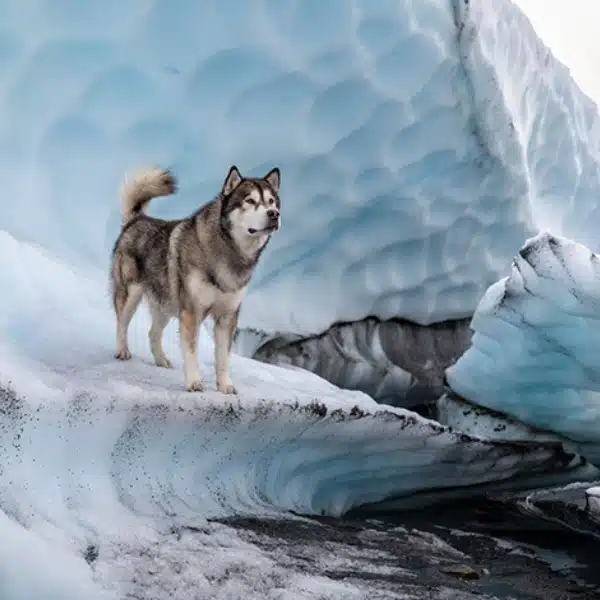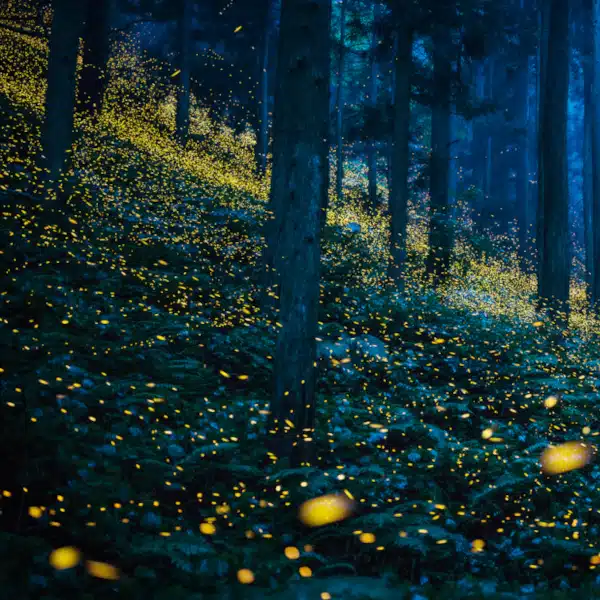
One of the most common questions we're asked is how we find the artists we feature on My Modern Met. One of the ways is checking out photo contests where up-and-coming photographers submit their best work. Critical Mass is a program that asks emerging and mid-career artists to submit a portfolio of 10 images. The work is pre-screened by a committee of 25 jurors, and from those votes, 200 finalists are determined. Finally, a jury of 200 of the world's best photography professionals, including gallery owners, curators, publishers, and editors, whittle that list down to the coveted Top 50.
Many of those in the Top 50 get massive amounts of exposure including being mentioned or published in such places as NPR and Wired as well as being invited to gallery exhibitions around the world. You can read many of the exciting success stories, here.
Recently, Critical Mass came out with their Top 50 in 2013. Here you'll see a mix of photographers we've previously featured on My Modern Met as well as ones we've just discovered. From their 50, here are, what we believe, are the 12 most fascinating visual stories in 2013. While all of the photos captured our attention, it was the accompanying stories that had us longing for more.
Picture You, Picture Me by Emer Gillespie



“Picture you, Picture me is a collaborative and explorative portrait project with my daughter Laoisha. Born in Galway Ireland in 2002, Laoisha has Downs Syndrome. As a consistent subject in my work, this series has naturally evolved from her curiosity and urge to stand on the other side of the camera, taking more and more control over me as the subject, and of the images taken. By directing each other through role-play and instruction, we decide how the other stands, which direction to face and even facial expressions, creating a playful environment where the camera becomes more than an artistic tool, but an instrument of amusement. The resulting diptychs are almost secondary to the experience, a fortunate by-product of the session shared. Starting over five years ago, this project is still on-going, and we are still shooting together to this day.”
Fukushima Landscape by Yuki Iwanami



“‘Nobody will return, except for the old people. This village is over,' said Kazuyuki Sato, a resident of Iitate village in Fukushima, Japan, once called the most beautiful village on the earth. Now it is called ‘abandoned village,' instead. The disaster of the Fukushima Daiichi nuclear power plant deprived of the life of the villager instantly. I have been photographing villages and towns in Fukushima, focusing on ‘invisible destruction' since the disaster happened.”
Behind Glass by Anne Berry



“Behind Glass refers both to the glass or boundaries of an enclosure and to the glass of the camera lens. Often I find myself gazing into the eyes of a monkey, his hand touching the glass wall that separates our worlds. The window works not only as a framing device but also to add atmosphere and narrative, left for the viewer to interpret. My photographs are about the beauty of animals but, more importantly, about their plight. The pictorial quality of these images softens the shock, but the punch is there in the eyes and melancholy expressions of the animals.”
Coming Soon by Natan Dvir



“In recent years, a kaleidoscopic net of huge billboards has enveloped the commercial hubs of New York City. The branding of the cityscape has become so ubiquitous, that the colorful, monumental advertisements, looming over the narrow streets, seem to be virtually unnoticed by the passersby. Giant billboards both dominate the urban landscape and blend into the background. Always in the peripheral vision, these ads turn the people moving through the space into passive spectators.”
Dare alla Luce by Amy Friend



“In the Dare alla Luce series presented here, I initially responded to a collection of vintage photographs, retrieved from a variety of sources both personal and anonymous. Through hand-manipulated interventions I altered and subsequently re-photographed the images ‘re-making' photographs that oscillate between what is present and what is absent. I aim to comment on the fragile quality of the photographic object but also to the equal fragility of our lives, our history. All are lost so easily. By playing with the tools of photography, I ‘re-use' light by allowing it to shine through the holes in the images.”
Fourth Grade by Judy Gelles



“Over the past four years, I have interviewed and photographed 140 fourth grade students from a wide range of socioeconomic and cultural backgrounds in China, India, and multiple areas of the United States. To conduct the photography and interview sessions, I spent one week at each of seven very different schools. I asked each student the same three questions: Who do you live with? What do you wish for? What do you worry about? Each student was photographed from the front and from the back.”
Jim Kazanjian



“My current series is inspired by the classic horror literature of H.P. Lovecraft, Algernon Blackwood and similar authors. I am intrigued with the narrative archetypes these writers utilize to transform the commonplace into something sinister and foreboding. In my work, I prefer to use these devices as a means to generate entry points for the viewer. I'm interested in occupying a space where the mundane intersects the strange, and the familiar becomes alien. In a sense, I am attempting to render the sublime.”
Atomic Overlook by Clay Lipsky



“I was raised during the height of the Cold War, when the threat of nuclear war loomed between two superpowers. The dramatized depictions in TV and film of such an apocalyptic demise both intrigued and scared me as a child. Yet the actual historical record of the atomic age was full of antiquated, black and white images that seemed dated and a world away. This series re-contextualizes a legacy of atomic tests in order to keep the reality of our post-atomic era fresh and omnipresent. It also speaks to the current state of the world and the voyeuristic media driven culture we live in, where catastrophes are viewed as entertainment.”
Revising History by Jennifer Greenburg



“‘Revising History is a series of manufactured images that I have created by replacing the individuals in vintage found-negatives with images of myself. I commandeer source material from someone else's life thus taking over their memories to call my own. The work is a performance that results in a series of photographs that are entirely counterfeit. I reference the gestures within the original image as a means to take ownership of that moment. I appropriate the mood and emotions, or lack thereof, of each event. In the decisive moment, I become a musician, a mother, a corpse– even though I am none of those things.”
The Struggle To Right Oneself by Kerry Skarbakka



“Philosopher Martin Heidegger described human existence as a process of perpetual falling, placing the responsibility of each individual to catch us from our own uncertainty. Such an unsettling prognosis informs this presented body of work. Over the past ten-plus years of creating these scenarios, I continually returned to questions regarding the nature of control and its effects on this perceived responsibility. Beyond the basic laws that govern and maintain our equilibrium, we live in a world that constantly tests our stability in various other forms. War and rumors of war, issues of economic security, effects of globalization, and the politics of identity are all external gravities turned inward, serving to further threaten the precarious balance of self, exaggerating negative feelings of control. This long-term, performance-based photographic work is in response to this delicate state, which relies on the shifting human conditions of the world that we inhabit.”
Rodeo Girls by Ilona Szwarc



“Rodeo Girls explores gender role reversal among young girls in Texas, who compete in rodeos, engaging in a sport traditionally reserved for men. My portrait series examines how rodeo girls demonstrate strength and discipline as they project their femininity onto their well-groomed and pampered animals. The animals take on the feminine qualities and girls embrace masculine demeanor. Those girls adopted the dress code that follows male fashion system and many of them enjoy not having to look or behave in a feminine way. They grow up according to a male archetype and I am examining how their lives and identities are shaped by their surroundings.”
From the Sea by Debora Schwedhelm



“Being in the military system and having to relocate every few years, my family often lives in a world of uncertainty – untethered, without an anchor. But photographing in the waters near my temporary home has offered me a sense of peace and rootedness. The images in this series are an exploration of this sense of place and being. While I am photographing my children and their friends, I am also photographing myself – moving in and out of focus, allowing the liquid world to welcome me home.”






















































































